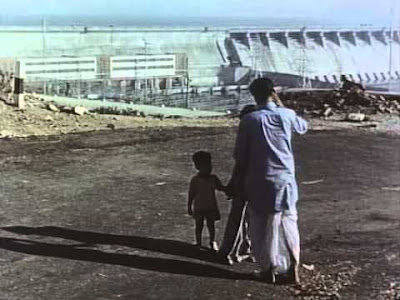India: Matri Bhumi
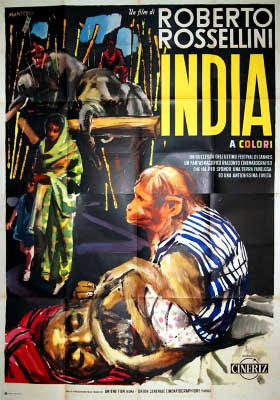
Director: Roberto Rosselini
Year: 1959
Rating: 6.0
It is hard to know how to approach this
film from Roberto Rossellini. It is a meld of fable, fiction and fact with
a narration from changing characters but told through the same voice in Italian.
Rossellini took a journey through India in 1956 and made this film. In each
stop along the way, he tells a story about a character - has locals act it
out and narrates it as if from the main person. Again, in Italian which makes
it lose its realism. What, I kept asking myself was he trying to accomplish.
Was he trying to tell the story of contemporary India? Was it based on some
religious text? Or were they just simple stories that he and his writers
came up with on the spur of the moment. I feel like I missed something deeper
than me because this film is praised to the skies by film critics. For years
it was unseen after its initial release - but as the film explains an enormous
effort was made to assemble if from various sources and then clean it up,
re-do the colors which had faded.
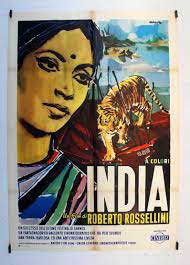
But this is India. Even back 60 years ago
it held a large percent of the world's population with hundreds of dialects,
multiple ethnic groups, languages, customs, religions, regions. Rossellini
barely can take a nibble at it in 90 minutes. So, what was he aiming for
I kept asking. Why do parts of it bore me, other parts interest me. He needed
more time. A bigger canvas. But what does he really understand about India?
A white man with no background in the subject comes to India with a camera
and tries to unfold this? But there are universal truths. Was that what he
was looking for? Someday when I am more ambitious, I want to tackle Louis
Malle's six-hour documentary Phantom India about the country. Another European
come to India looking for something.
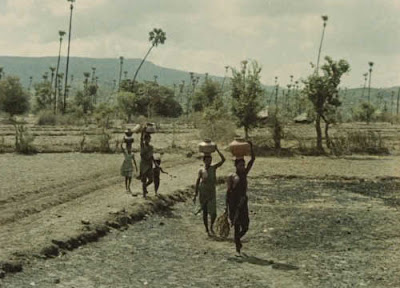
I was suspect about this from the beginning
when it begins in Bombay (Mumbai) and the narration tells us about the incredible
diversity and how they live together in harmony. What? The Partition was
only nine years previous to the filming - there was not a lot of harmony
as thousands were slaughtered in the streets for not being the right religion.
Then I read Rossellini was there at the invitation of Nehru who wanted a
positive portrayal of India by a famous director. Ok. Now I get it. And that
tilting of the truth runs through the film in its adoration of India. Everything
is steeped in mysticism, spiritualism. In the first section he scripts a
story about a Mahout - trainer, keeper and rider of elephants. There is a
lengthy section on the use of elephants to clear the land of trees and then
carrying them away. The narration talks about the "alliance" of man and elephant.
Not really. The elephant did not enter that alliance willingly and for me
it was painful to watch these beautiful beasts of burden being overworked.
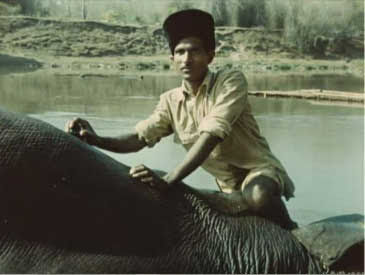
Later in another segment, it is a monkey
in a circus that he focuses on - while we see other free monkeys happily
swinging from tree to tree. Maybe that was the point. There are two other
sections - an 80-year-old man who takes his two beloved cows into the jungle
where he comes across a tiger but the tiger isn't as scary as the intrusion
of mining into the jungle that destroys the balance between man and animals.
Finally, we visit a man who has been working on an enormous project - to
build a dam. And that was incredible watching it built as the narration says
rock by rock as hundreds of men and women haul away the stones in baskets
and on top of their heads. For me, it was the non-story parts that I liked.
People at work, play, traveling, the boat trip on the Ganges passing Benares
and all the magnificent decaying temples. I don't really know what the scripted
parts added to this. There was a poetry to the narration, but that language
was clearly being imposed by the filmmakers and not by people out in rural
India where nearly all this takes place. Let them tell their own stories.
Apparently, when Nehru saw it, he was as perplexed as I am.
